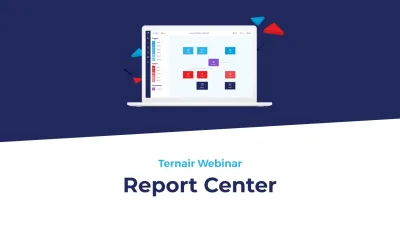What roles do Marketing and Sales have in the lead process?
The lead process has an important distinction in objectives between Marketing and Sales. Sales generally works with Sales Qualified Leads (SQLs): these are leads whose details are known and who have become clear that they have a concrete need, show interest, and to whom your proposition can be 'sold' as a solution. Marketing needs to work much more from assumptions to arrive at those leads. Concrete SQLs have yet to be found and achieved. And so marketing mainly tries to maximize the chances of that happening. For example, by looking at look-a-like audiences, by creating as many relevant touchpoints as possible. For example, a touchpoint is viewing your website, opening your app, clicking on your email, downloading a brochure or liking a post. Read 5-effective-leadnurturing-strategies that will send your leads through the sales funnel.
What does lead generation mean for Marketing and Sales software?
The distinction in objectives during the lead process is reflected in the requirements for capturing and editing lead data and the systems in which you do it. Because sales works with concrete SQLs, a CRM is the best solution. In it, all touch points and communications with concrete leads are captured 1-to-1 and followed up automatically or manually.
Because marketing has to fill the CRM, creativity is important. They do not (always) or have limited data of concrete leads and work with assumptions, with flexible segments, with many test cases or with Next-Best-Action models. In that case, CDP/Marketing Automation software is important, because in it the flexibility of working with data, creating hyper-segments and adding data sources is important.
Our software helps marketers, for example, recognize anonymous leads and make optimal use of touch points and conversion moments. This is the beginning of the customer journey. Good lead generation based on CDP/Marketing Automation software is followed up (automatically) with the most relevant possible campaigns to larger groups of leads, which are nevertheless approached in a personalized way. In this way, it generates enough acquisition for new potential customers (SQLs) and direct conversion to purchases, which not only makes the investment in marketing channels measurable, but also provides a faster return on investment.
In lead generation, the following marketing tactics are often actively used:
You use different forms of content to interact with your target audience. Or, more importantly, to attract attention. In search of new customers, you create a funnel, in which relevant information is always offered at each stage. Suspects thus become Prospects, enrich to soft leads (MQL) and qualify to hard leads (SQL). Finally you convert them to customers, after which onboarding, loyalty and retention (also automated) are applied.
What do lead generation campaigns with a CDP/Marketing Automation deliver?
What does it deliver? We get that question on a regular basis, of course. We'd love to connect with you to share the results that our customers are achieving with their CDP/Marketing Automation based on data. They achieve up to 30% more results and save on a lot of executive marketing tasks related to data and content, allowing them to focus on improving campaigns. An important reason is also to increase customer satisfaction with personalized, and therefore relevant, communication. Communication pressure can also be much better distributed across customers and marketing channels.
Return On (Marketing) Investment
On our website you will find a whitepaper that helps you make the business case for yourself as well as your internal stakeholders
Conversion
You target potential customers with a high propensity to buy or based on their specific segment and profile within your broad target audience
Measurable results
You track which suspects and prospects you convert to MQL and SQL and ultimately to customers
Short-term results
Other than above-the-line campaigns, lead generation delivers short-term results
How can you optimize lead generation?
You want to optimize lead generation: our software will help you do just that. You build success on four key pillars:
Building on First Party Data
From strong, proprietary optin data, you'll work to create better and better profiles as you start to combine this data. Don't immediately think of big Datawarehouse or Customer Data Platform projects. You can also start agile and also with a few data sources. Even better, it will give you faster results and direction for the future.
Intelligent Automation (manually or with A.I. models)
You don't have to be Google or Netflix to know which automations will give you the fastest efficiency or results. That's how you successfully follow up on every lead.
Creative Content Personalization
To make lead generation a success, bring data and content together 1-to-1, with the right content for each prospect at a relevant time.
Distribution (channels)
Prospects use multiple channels: email, social media, websites, apps, DM, phone/text. Make sure you use each channel at the right time.
Approach to lead generation with Ternair
Central data
By linking data from transaction systems, landing pages, downloads, website visits and manual entry of leads (acquired at a trade show, for example), we provide one central 360-degree approach. This guarantees overview and is an important basis for getting started. We do this in a professionally agile manner, with all data stored in the EU.
Lead nurturing and qualification
By qualifying leads based on interactions, behavioral data and customer profiles, you build enriched profiles and a picture of who has the most potential. Our software helps you (re)target all groups at every stage of their customer journey. By utilizing every touchpoint during the journey, you never miss an opportunity. You will always approach your potential customers at the right time with the information they want at that moment.
Lead management
With better insight into your leads and the various segments and subgroups, it becomes easier to steer and respond to them. Our software provides overview and insight, to attract more new customers.
Services
We provide not only the software in Dutch and English, but also the services that make it successful in Dutch and English. So you get professional software with flexible data connections, along with professional help from Marketing Automation Specialists in your industry.
FAQ: frequently asked questions about lead generation
How do I get started with lead generation?
The most important prerequisite is an internal conviction that your organization can grow data-driven faster by building customer profiles and lead nurturing. If that is present, then you can step by step set up your lead generation plan as described in this article and search for the software that best supports your organization.
What impact does the elimination of third-party data have on lead generation?
The elimination of third-party data due to legislation and increased privacy measures will result in a new role for the marketer. They can no longer blindly rely on the marketing tools of parties such as Google and Facebook, but will have to build lead generation through their own channels. The good news: if you do this smartly, you will build true customer satisfaction and a golden database for lead generation in every step of the customer lifetime cycle.
Is lead generation right for me?
Our clients deploy lead generation for B2B and for B2C, in commercial and non-commercial organizations. In traditional and modern industries, so chances are we can help you with this too. In doing so, we provide the services that help you deploy the software.





